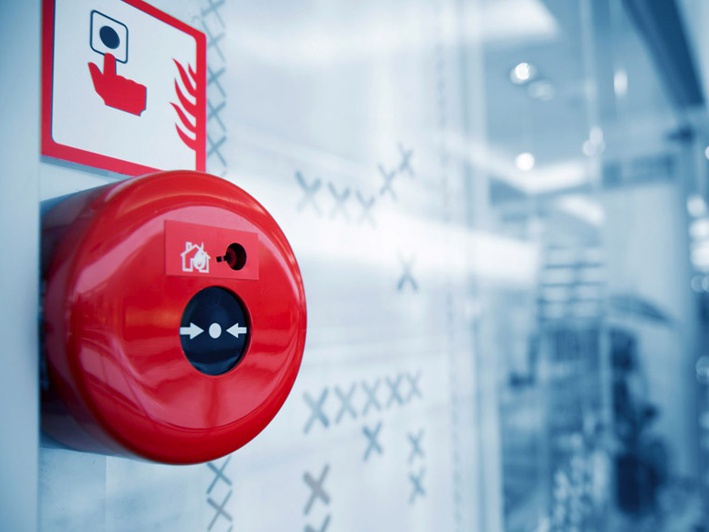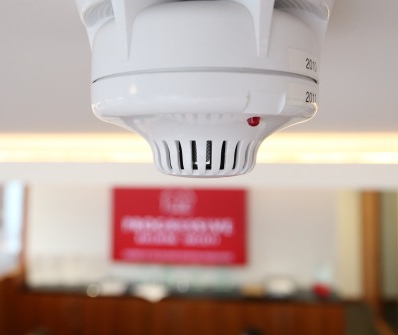Fire Detection
Fire detection systems play a vital role in all buildings; the detection system needs to alert the building’s occupants in case of a fire emergency.
By detecting a fire accurately and quickly an early warning and alarm system can help eliminate damage by ensuring that an out-of-control fire can be prevented before it even starts.
Different premises have different protection requirements. Most fire detection systems use a smoke detector to detect a fire. A smoke detector or smoke alarm is a device that detects smoke and triggers an alarm; the fire detector may have a direct connection to an alarm monitoring centre.
Vox Fire has trained staff who understand the various types of fires and the different alarm and fire detection options. Contact us for a consultation.
“Working with suppliers like Vox Fire makes my day so much easier. Thank you for going the extra mile.”
Simon Mahlangu
Vox Fire Client – Google Review
In all instances, the fire detection unit chosen should be appropriate for the premises to be protected.
For example, a heat detector may function better than a smoke detector in a fume-laden or dusty environment but may not be appropriate for the rest of the protected premises.
Choosing the right type of detector will reduce the chances of it giving false fire signals. False alarms can cause costly interruptions to manufacturing processes and business activities.
In workplaces where a fire could develop for some time before being discovered, it is important to protect vital escape routes, particularly staircases, with fire-resisting construction which may include fire-resisting doors.
When a human is not present or cannot for some reason raise the alarm, an automatic system can be used. Automatic detectors are meant to imitate one or more of the human senses of touch, smell, or sight. Thermal detectors are similar to our ability to identify high temperatures, smoke detectors replicate the sense of smell, and flame detectors are electronic eyes.
Automatic systems can be set to trigger sprinklers and/or to call the fire service automatically. It is not uncommon for modern types of systems to detect smouldering cables or overheating circuit boards. They may also shut down electrical, air handling equipment or special process operations, and they may be used to initiate automatic suppression systems.
In premises not suitable for a smoke detector, such as kitchens, a heat detector is used. Hybrid detectors which combine smoke, heat and CO detection can be used in premises where vehicles are kept. The ultimate system type, and selected components, will be dependent upon the building construction and value, its use or uses, the type of occupants, mandated standards, content value, and mission sensitivity.
Successful fire suppression is dependent on extinguishing flames before, or immediately upon, flaming combustion. During the incipient period, a trained person with portable fire extinguishers may be an effective first line of defence.
However, should an immediate response fail, or the fire grow rapidly, extinguisher capabilities can be surpassed within the first minute. More powerful suppression methods, either fire department hoses or automatic systems, then become essential.
It is important to ensure the reliability and safe operation of fire-fighting equipment and installed systems such as fire alarms and emergency lighting. Use a competent person/company to carry out periodic servicing and necessary repairs. A record of the work carried out on such equipment and systems will help to demonstrate compliance with the law.
10 Point Fire Detection and Warning Checklist
- Where necessary, is a fire detection and alarm system installed?
- Is all fire detection and alarm equipment regularly checked?
- Are there clear instructions for the responsible employees about the testing of equipment?
- Are those who test and maintain the equipment adequately trained to do so?
- Can the existing means of detection discover a fire quickly enough to raise an alarm in time for all the occupants to exit to a safe place?
- Can the means for giving warning be clearly heard and understood throughout the whole premises when initiated from any single point?
- If the fire detection and warning system is electrically powered, does it have a back-up power supply?
- Have you told and trained your employees about your fire warning system, will they know how to operate and respond to it?
- Are there instructions for your employees on how to operate the fire warning system and what action they should take on hearing a warning?
- Have you included the fire detection and fire warning arrangements in your emergency plan?
Fire Detection




